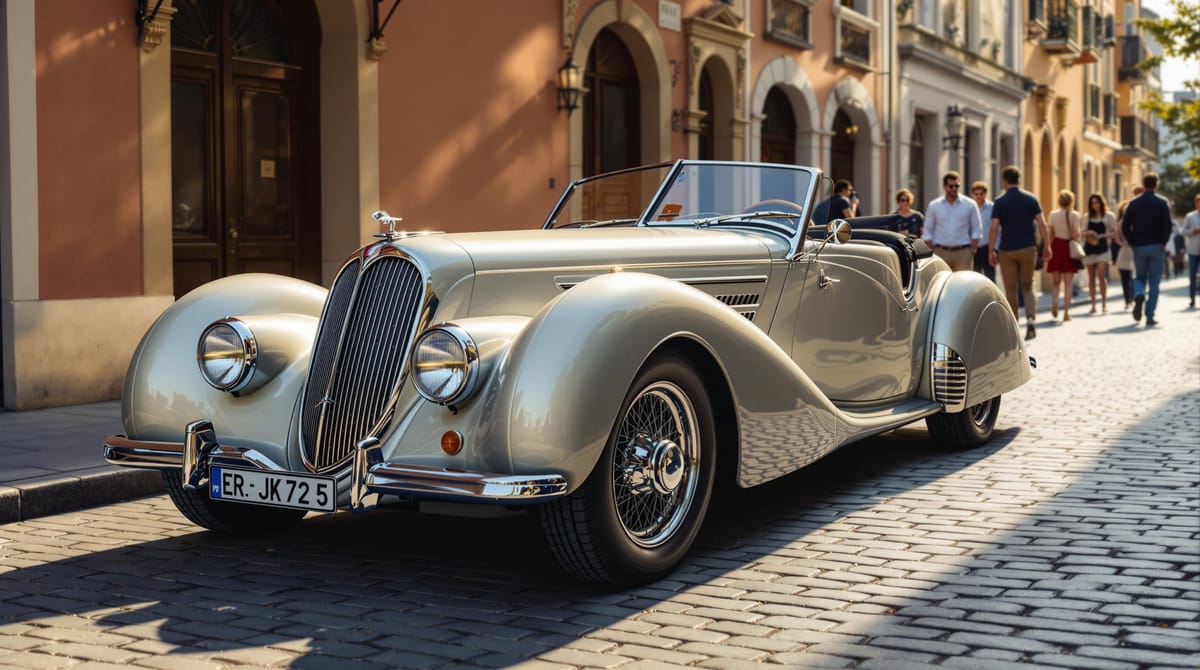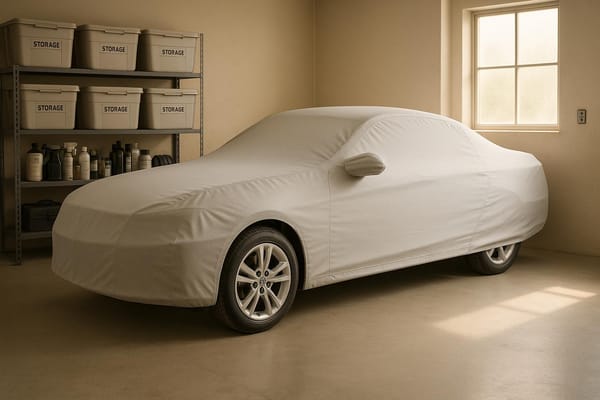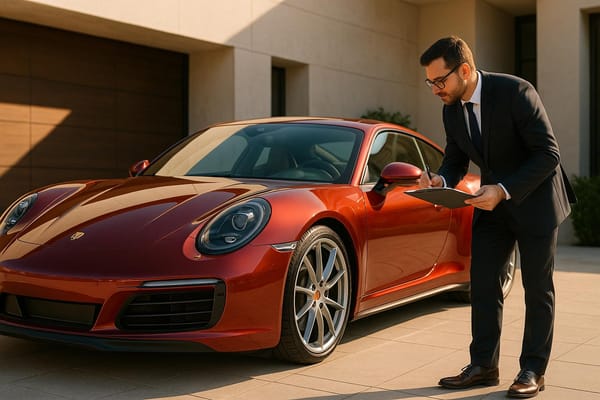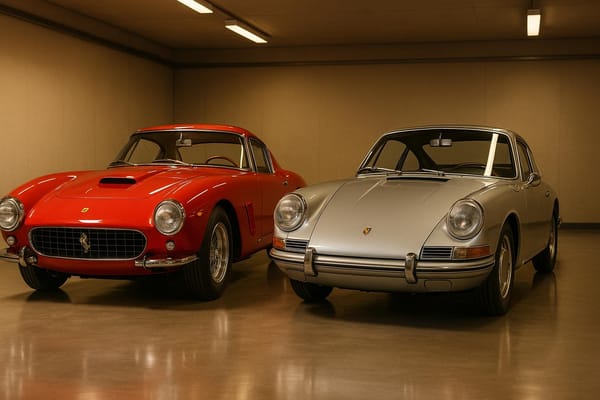Expert Q&A: Investing in Pre-War Classics
Explore the world of pre-war classic cars as investment opportunities, focusing on authenticity, rarity, and market trends.

- Pre-war classics (cars built before World War II) are prized for their rarity, historical significance, and unique engineering.
- Top investment models include the Bentley 4½ Litre, Bugatti Type 57, Alfa Romeo 8C 2300, Mercedes-Benz 540K, and Lagonda V12, with values ranging from £400,000 to £8m.
- Key factors influencing value: originality, rarity, racing history, mechanical authenticity, and complete documentation.
- Original cars hold the most historical value but need more upkeep, while restored cars offer reliability but may risk over-restoration.
- The UK market remains strong, with increasing interest from collectors aged 35–50 and international buyers.
Quick Tips:
- Verify authenticity: Match engine and chassis numbers to factory records.
- Focus on originality: Cars with original parts and history fetch higher prices.
- Monitor trends: Follow auction results and market shifts for timing your investment.
- Get expert advice: Consult specialists for inspections and valuations.
Investing in pre-war cars requires thorough research, market awareness, and expert guidance. Done right, it’s a rewarding way to combine passion with profit.
Finding Investment-Grade Pre-War Cars
What Makes Pre-War Cars Valuable
Several factors influence the value of pre-war cars. These include:
- Mechanical authenticity: Matching engine and chassis numbers
- Competition history: Success in races or participation in notable events
- Design significance: Groundbreaking engineering or influential styling
- Production scarcity: Limited manufacturing runs
- Historical prominence: Ownership by royalty or celebrities
- Period correctness: Retention of original fixtures and fittings
- Documentation completeness: Availability of build records and service history
Using these criteria, certain pre-war models consistently achieve high prices at auctions across the UK and Europe:
- Bentley 4½ Litre (1927-1931): Only 235 produced, valued between £850,000 and £2.5m
- Bugatti Type 57 (1934-1940): 710 made, selling for £1m to £3.5m
- Alfa Romeo 8C 2300 (1931-1934): Just 188 produced, commanding £3m to £8m
- Mercedes-Benz 540K (1936-1940): 419 built, priced at £1.5m to £4.5m
- Lagonda V12 (1937-1940): Limited to 189 units, valued between £400,000 and £900,000
Top Pre-War Models in Britain and Europe
The models listed above stand out because they embody multiple factors that drive value. For example, the Bentley 4½ Litre combines a rich racing history at Le Mans with its rarity. The Bugatti Type 57 is known for its advanced engineering and exclusive coachbuilt designs. Meanwhile, the Alfa Romeo 8C 2300 blends competition success with technical sophistication, making it a standout choice for collectors.
Pre-War Classic and Vintage Car Market 2024
Checking Car History and Condition
Verifying a car's history and condition helps minimise risks and strengthens your investment decisions.
Once you've identified a potential model, it's crucial to confirm its authenticity and assess its condition before proceeding.
How to Check Car Authenticity
To ensure a car's authenticity, compare its chassis and engine numbers with factory build sheets through marque specialists or heritage archives. Key steps include checking:
- Factory build sheets and delivery records
- Matching serial numbers for the engine, chassis, and major components
- Original period gauges, switches, and mechanical parts
- Correct use of metals, woods, and fabrics
- A complete chain of title and service records
Once authenticity is established, evaluate the car's condition to find the right balance between originality and usability.
Restored vs Original Cars
When considering a car's condition, weigh the pros and cons of these categories:
- Original: Offers the most historical value but may require significant maintenance.
- Restored: More reliable with improved cosmetics, though there’s a risk of over-restoration.
- Partially Restored: Maintains some original features while offering usability, though the quality of the finish can vary.
Getting Expert Inspections
Hire a specialist in pre-war marques to perform a detailed inspection. This should include:
- Mechanical assessment: Compression testing, oil analysis, and gearbox inspection.
- Body and chassis survey: Checking panel originality, frame integrity, corrosion, and paint quality.
- Documentation review: Examining build records, service history, and ownership details.
Using an expert with experience in pre-war vehicles ensures a thorough and reliable evaluation.
Market Analysis and Trends
Understanding market trends and timing can make all the difference when investing in pre-war cars, especially when authenticity and condition are confirmed.
UK Pre‑War Car Market Status
Once individual cars are evaluated, it's crucial to grasp the broader UK market dynamics to identify what drives prices and who the buyers are. The pre-war classic car market in Britain has shown steady demand, with iconic brands like Bentley, Rolls‑Royce, and Bugatti continuing to dominate. Prestigious auctions frequently feature these vehicles, highlighting their consistent appeal among collectors.
What Affects Pre‑War Car Prices
In addition to factors like authenticity and provenance, two key elements are shaping the market:
- Market Demographics: Buyers aged 35–50 are emerging as a significant group, alongside interest from heritage museums and international collectors.
- Economic Factors: Shifts in interest rates, currency fluctuations, and changes to heritage-vehicle legislation can all impact when buyers choose to invest and how much they're willing to pay.
Making Smart Investment Choices
To make informed decisions in the world of pre-war classic cars, combine market analysis with reliable data and expert guidance.
How to Track Car Values
Rely on trusted price guides, regularly updated market indices, and auction results. Pay close attention to condition reports and provenance details, as these often influence higher prices.
UK Research Resources
Explore national and specialist archives for technical specifications, production records, and factory documents. Newsletters from enthusiast clubs and vintage car associations can provide expert opinions and market updates. These resources work well alongside value-tracking tools and historical sales data.
Using Past Sales Data
Looking at past sales can uncover key trends, such as how prices evolve over time, the higher value placed on original, well-documented vehicles compared to restored ones, and seasonal price spikes around major events.
Pre-War Car Comparison Guide
When evaluating pre-war cars, investors often consider factors like rarity, maintenance requirements, history, and racing heritage. Extremely rare models tend to yield higher returns but usually require expert maintenance. On the other hand, more common pre-war cars are typically less expensive to acquire and easier to maintain. To protect the car's value, focus on models with original parts and comprehensive documentation.
Check out the table below for a detailed comparison of key pre-war models.
Summary and Investment Tips
After reviewing the key models, here are some practical tips to help refine your pre-war classic car investment approach:
- Verify authenticity: Check chassis numbers and build records with marque specialists to ensure the car's provenance.
- Look for racing history: Cars with a documented racing background and competition success often hold greater appeal and value.
- Prioritise originality: Focus on vehicles with original components and matching numbers for better investment potential.
- Monitor the market: Keep an eye on seasonal price fluctuations and UK auction results to spot trends and opportunities.
- Build connections: Cultivate relationships with experts and inspectors specialising in pre-war cars for valuable advice and insights.
- Dive into archives: Research factory records and historical documentation to gain a deeper understanding of the car's history before committing.
These tips underline the importance of thorough research, proper documentation, and staying informed about the market. By following these steps, you'll be better equipped to navigate the pre-war classic car market confidently.




